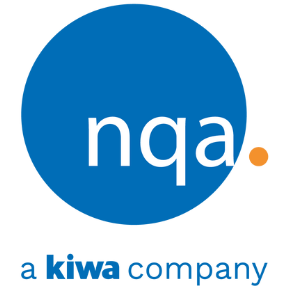PAS 2080: Gearing Up For National Highways’ 2025 Carbon Mandate
.png)
On 12 March 2025, NQA hosted a webinar - PAS 2080 Carbon Management in Buildings and Infrastructure: find out more ahead of the National Highway's December deadline for compliance. The session, led by Stephen Burt (NQA’s Carbon & Sustainability Services Director), explored the revised PAS 2080:2023 standard and its implications for organisations across the built environment.
 Why PAS 2080 Matters Now
Why PAS 2080 Matters Now
PAS 2080 mandates collaborative carbon management across the whole life cycle of buildings and infrastructure - from design and materials, construction, operation and end-of-life. The 2023 update expanded its scope to cover entire built environments and aligned it more closely with science based net-zero targets.
The National Highways mandate is currently the catalyst: all of their contractors and sub-contractors must be PAS 2080 compliant by 31st December 2025, forcing emissions accountability far upstream in the value chain.
 Key Benefits Of PAS 2080 Adoption
Key Benefits Of PAS 2080 Adoption
1. Carbon reduction through smarter design - apply the “Avoid, Switch, Improve” carbon hierarchy to minimise capital carbon:
-
Avoid the basic need for building any new assets.
-
Switch to low-carbon materials like GGBS cement, recycled asphalt and aggregate, bio-fuels; or adopt a low-carbon design approach.
-
Improve supply chain coordination to cut waste and inefficiency, for example through the adoption of circular economy principles.
3. Competitive edge - tendering now increasingly requires compliance with PAS 2080.
As one NQA client observed: “It is no longer about Price and Programme. It is about Price, Programme and PAS”.
 Who Should Consider PAS 2080?
Who Should Consider PAS 2080?
PAS 2080 applies to:
-
Asset owners and managers
-
Designers (such as architects, engineers)
-
Construction and demolition companies
-
Product and material suppliers
If you’re part of a supply chain feeding into National Highways—or similar government bodies like Network Rail or the Environment Agency—PAS 2080 is fast becoming a compliance baseline.
 Inside The Standard
Inside The Standard
Stephen Burt’s presentation broke down PAS 2080:2023 into 12 core clauses, including:
| Clause | Focus |
| 4-5 | Decarbonisation principles, Leadership |
| 6 | Carbon integrated decision-making |
| 7 | Whole-life carbon assessment methodology |
| 8 | Setting baselines & targets |
| 9-10 | Monitoring, reporting & sustainable procurement |
| 11-12 | Continual improvement & conformity claims |
Training and governance tools like carbon policy drafting, staff education, data collection, and life-cycle assessment are central to compliance.
 Tips From NQA
Tips From NQA
-
Start early: influence is strongest during design and procurement.
-
Use recognised LCA standards: BS EN 15978/15804, Environmental Product Declarations, National Highways carbon tools, etc.
-
Leverage independent verification through NQA to make credible third-party conformity claims.
 What This Means For You
What This Means For You
If you’re working in construction, design, material supply or consultancy within highways infrastructure networks, PAS 2080 compliance isn’t optional anymore. The National Highways deadline brings carbon governance from policy to contract.
To start your PAS 2080 journey:
-
Review the standard’s 12 clauses and assess where your organisation stands.
-
Map your value-chain role - designer, constructor, supplier and assign life-cycle module stage responsibilities.
-
Invest in training, carry out lifecycle assessments, and gather quality data.
-
Choose independent, third party, impartial verification to boost trust and win tenders.
NQA supports this through training, verification and certification helping your operation integrate PAS 2080 into your business strategy.
 Next Steps
Next Steps
-
Download the webinar slides for deeper insights.
-
Join NQA’s next PAS 2080 training sessions or webinars.
- Contact NQA for guidance, quotes, or signing up for verification.
 Summary
Summary
PAS 2080:2023 is more than a carbon standard it’s a sector-wide catalyst for decarbonisation, now amplified by a hard deadline. Early action, informed by LCA best practice and driven by cross value chain collaboration, will be the difference between ticking a box and leading the market.
